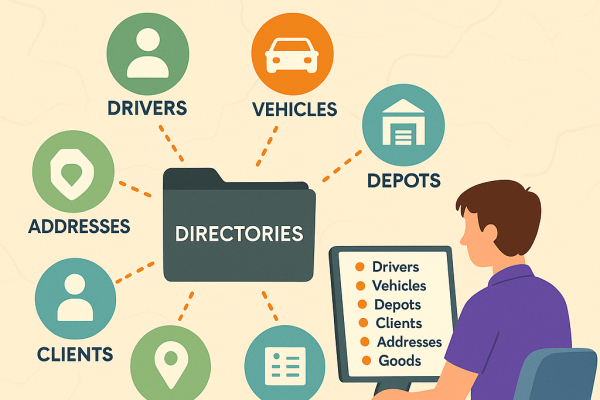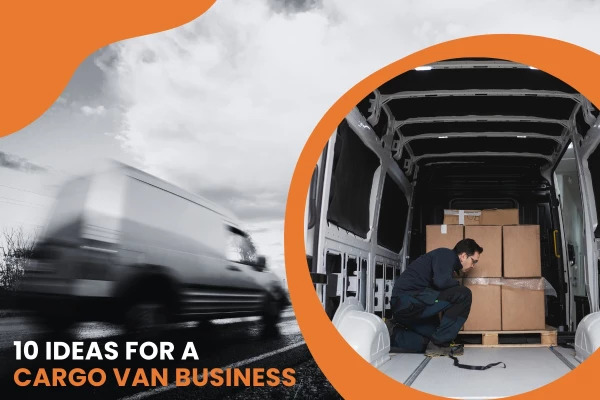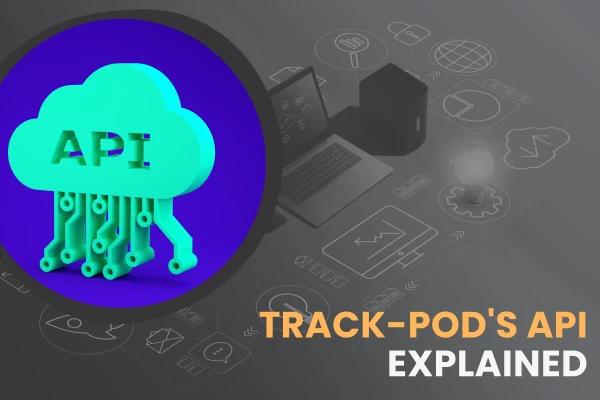Driver Onboarding: Get Started Faster Using These 6 Tips

by
Alisa Cvilij
June 18, 2024
The issue of driver onboarding is something fleet managers know all too well. Driver shortages and high turnover rates result in the need to onboard fast and waste no money while your new hires are getting started.
Whether you choose to work with part-time delivery drivers or hire full-time employees only, the orientation process has to happen for all of them. This includes giving your staff the tools to succeed.
How do you make sure the driver onboarding process doesn't slow you down? Use the tips below and make the most of new employee training with Track-POD delivery driver app.
Table of content
- What is driver onboarding?
- Driver onboarding checklist
- Driver onboarding classes
- 6 tips for driver onboarding
What is driver onboarding?
When taking on new drivers, it’s important to make sure that they are the right person for the job. You need assurance that they will maintain professional relationships with your customers. Make sure that you can trust them with the safety of your vehicle and cargo.
Driver onboarding for delivery business
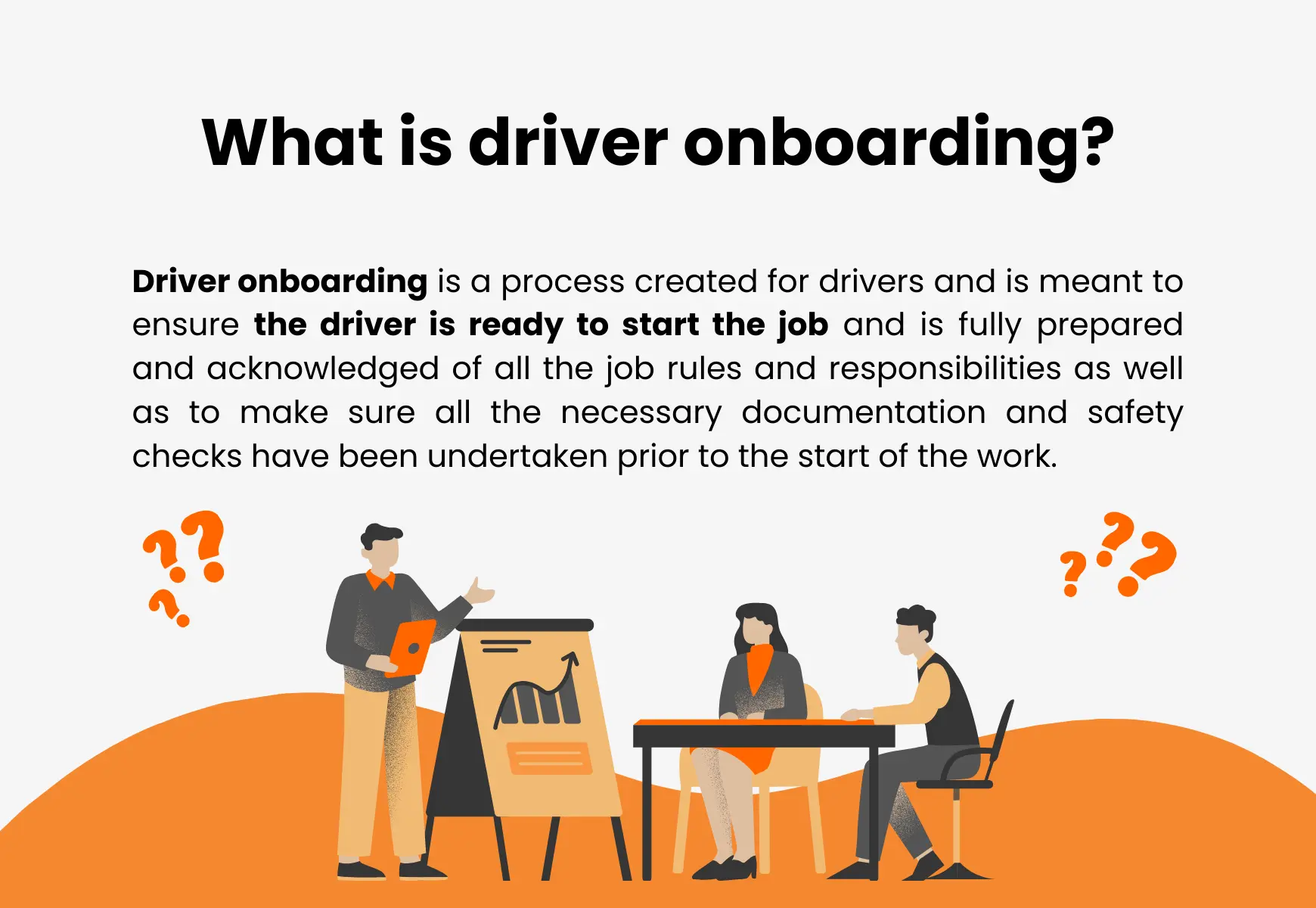
Always have your driver onboarding checklist available
Driver onboarding involves the following steps:
- Do a background check. This includes criminal records or traffic offenses.
- Check documentation such as licenses and identity.
- Ask for references from previous employers or customers.
- Ask for certificates regarding previous training.
- If there are passengers involved, make sure they comply with passenger transport certifications.
- Review and sign employment or contractor agreements, including confidentiality terms, liability waivers, and compliance policies. Using digital contract signing speeds up onboarding and eliminates paperwork delays.
Driver onboarding classes
Part of the truck driver onboarding process should include courier classes. This can work for you in many ways:
- Inform drivers of your company policies and procedures.
- Make sure drivers are up to date with the safety measures and policies.
- Teach safety rules and responsibility on the road. This includes driver etiquette and the avoidance of driver offenses.
- Management of fatigue and substance abuse.
- Teach drivers how your incident reporting works.
- Enforce the importance of vehicle safety checks.
At the same time, you can assess their skills and character traits, such as responsibility and road safety ethics. For an effective induction for new staff, consider employing a driver onboarding specialist to manage the process.
If you are in the business of transporting passengers or medical equipment, you will have to provide more in-depth training. Medical courier classes should include training in special handling methods for equipment. Your training materials should include detailed modules, instructional videos, and practical checklists to reinforce correct handling techniques for medical equipment. Some input from the equipment suppliers may be useful here.
How do you ensure that the dispatch driver onboarding process doesn't slow you down? Use the tips below to make the most of new employee training with the Track-POD delivery driver app.

The truth about driver onboarding
New employee onboarding always boils down to how complex your systems and processes are.
If you hired somebody it means that the person is qualified enough to do the job right away. The question is, how quickly can the new hire master your processes and tools to do the job?
Commercial truck drivers are no different. If the driver's job is to transport packages and collect delivery confirmation, they need the tools to do this.
The tools will vary in complexity and scope, depending on the nature of the job. They may need to plan their own routes, get documents signed, or cover different territory.
More tasks means longer onboarding. More complex tools and systems means longer onboarding. The trick, therefore, is to remove all extra tasks and go for smarter, easy-to-use driver onboarding apps that help drivers do more in less time.
Let's take it one step at a time.
1. Remove extra tasks
The idea of having one person fulfill a lot of different tasks may sound lucrative to some managers. In reality, it comes at a cost of lesser efficiency and human error due to unfocused attention.
For example, delivery drivers can be tasked with building their own routes. Sometimes they aren’t given the necessary GPS apps to do so. The result is inefficient routes and unpredictable workload.
It's one thing not to be able to afford a full-time dispatcher, and another to stick to manual work and ignore all of the automated tools already available.
Say, an advanced delivery system will build multi-stop routes in seconds while a human dispatcher would need hours to do so.
With versatile tools like Track-POD’s delivery software, you can remove extra tasks like route planning. The technology will handle routing for you so there's no need to train your drivers additionally.
2. Minimize the toolkit
Removing extra tasks and limiting the toolkit may sound counterintuitive to the growth model.
It makes sense to remove tasks by automating them. Limiting the toolkit to the apps you use, and using them to their full potential sounds appealing to any business owner.
Minimizing the toolkit for faster driver onboarding means going for all-in-one tools that handle many tasks at the same time. Take Track-POD dispatcher web app and driver mobile app as an example.
Here's what you can do with Track-POD's solutions.
- Multi-stop route planning in seconds.
- Fuel, mileage, and load optimization.
- Shipping labels & barcode scanning.
- Proactive vehicle maintenance.
- Navigation & task management.
- Customer notifications & live tracking.
- Proof of Delivery or Collection.
- Real-time analytics & historical reports.
All this can be done with just 2 tools: a web app for the dispatcher and a mobile app for the driver. As a result, driver onboarding can be minimized to learning one tool that takes care of every task the driver has.
3. Choose easy tools
Easy-to-use is a buzzword used by a lot of apps. Can your older, less tech-savvy drivers learn the tools quickly and use them without difficulty?
Easy doesn't have to mean limited. Some advanced tools on the market are intuitive and easy to learn. They provide Enterprise solutions like a free barcode scanner built into the drivers' mobile app.
Easy also means versatile, and this echoes the previous point. Tools that you can use out of the box, without paying extra for enabling add-ons, and solve many tasks with will always be easier to learn.
Here's what Track-POD customers have to say about deploying the driver app.
“Training drivers on the mobile app was seamless. Track-POD is simple enough just to go through a video visually and you know how to do it.”- Steve Del Fatti, Senior Manager, Supply Chain Solutions for Veritiv Canada (now Imperial Dade Canada)
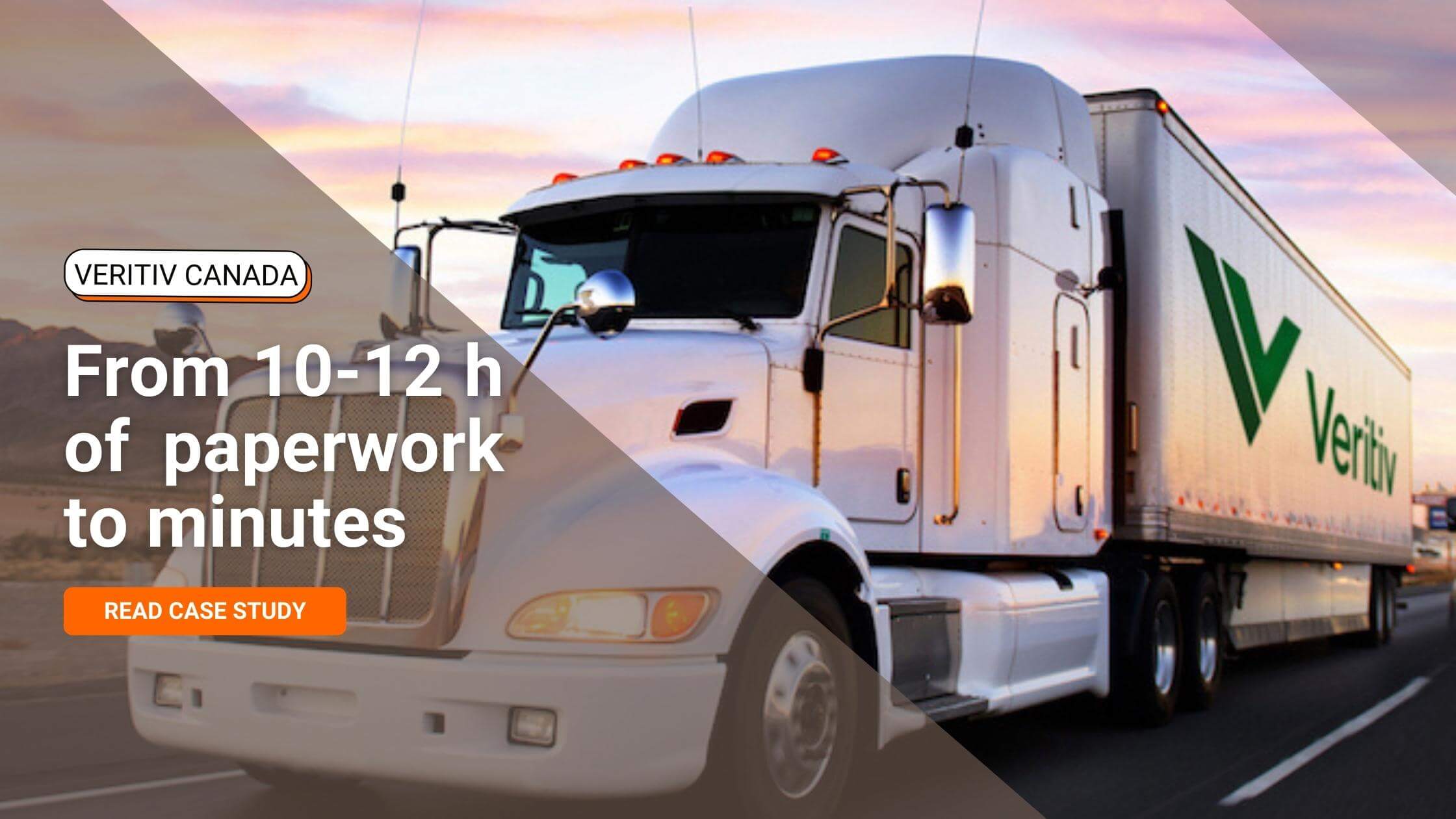
4. Prioritize flexibility
If you're just getting started or dealing with high driver turnover, you may be considering the hiring of contract drivers.
Driver tools come at a cost. However, every user counts, so it makes sense to go for apps and software that offers flexibility in the number of users and user rights.
Because driver tools will cost you, and every user counts, it makes sense to go for apps and software that offers flexibility in terms of the number of users and user rights.
While some software providers will charge you per driver, others offer unlimited users and charge per number of tasks. And some vendors like Track-POD can do both.
With Track-POD delivery software, you can either pay by driver/vehicle or by the number of tasks you can add and process per month. When you choose to pay per number of tasks, you can add and remove as many drivers as you need without paying extra.
Driver onboarding will, therefore, not cost you anything on top of what you pay for the software license. However many new hires you need, all can be added to the system without additional charges.
5. Promote peer learning
When it comes to driver onboarding, instructional videos will never be as good as shared experiences from other drivers. Experienced drivers impart their experiences, common challenges, and solutions identified along the way.
This is not to say that drivers don't need support from their managers. Alternatives are video materials created for faster comprehension and learning. On the contrary: the more support you can give, the better.
Another question is whether your drivers need that support, or not. This considering how you give them easy-to-use tools and the expertise of other drivers.
Peer learning in this regard means more experienced drivers onboarding new hires. This includes demonstrating how to use the tools and what kind of processes there are.
While some things are intuitive, load confirmation, order transfer, or paperless Proof of Delivery need some context. No one is better at giving instructions than other drivers who have done all of the above in the same context.
You could also consider providing a driver or courier onboarding document that helps them initially. Something that they can keep in the cab for future reference.

While some things are intuitive, load confirmation, order transfer, or paperless Proof of Delivery need some context and instructions. No one is better at giving those than other drivers who have done all of the above in the same context.
6. Safety on the roads
Drivers spend a lot of time on their own and are constantly under pressure to meet deadlines. These factors take a toll on their mental health.
Many truck accidents are caused by driver fatigue. Countries worldwide now recognize this and have put regulations in place to monitor drivers.
Modern trucks often have factory-fitted electronic logging devices (ELDs). These devices monitor vehicle and driver activity and let you know when your vehicle needs service. You can also upload the tracking data into a database for further analysis.
Check the regulations that apply in your country or state.
Here is a general guideline for driver hours:
- Drivers should not work more than 14 hours per shift.
- They should not drive consecutively for more than 8 hours without taking a reasonable break.
- There must be a rest period of at least 10 consecutive hours between shifts.
There are exemptions for installing ELD devices. However, you need to prove that your drivers adhere to the abovementioned parameters. The exemption usually only applies to drivers who stay within a 150-mile radius.
Final thoughts
Driver and courier onboarding is something that business owners and fleet managers need as fast as possible. And, as efficiently as possible.
There's no need to complicate things. Advanced solutions can be found and implemented even by small business operations. You can make your drivers' and managers' lives simpler with easy onboarding.
I hope you can use these tips to speed up driver onboarding and go full speed without losing efficiency. If you're curious about Track-POD's apps and solutions to driver management and dispatch, book a demo or start your free trial now.
About The Author
Alisa Cvilij
Content Marketer at Track-POD. Passionate about building meaningful and helpful content for the readers.







